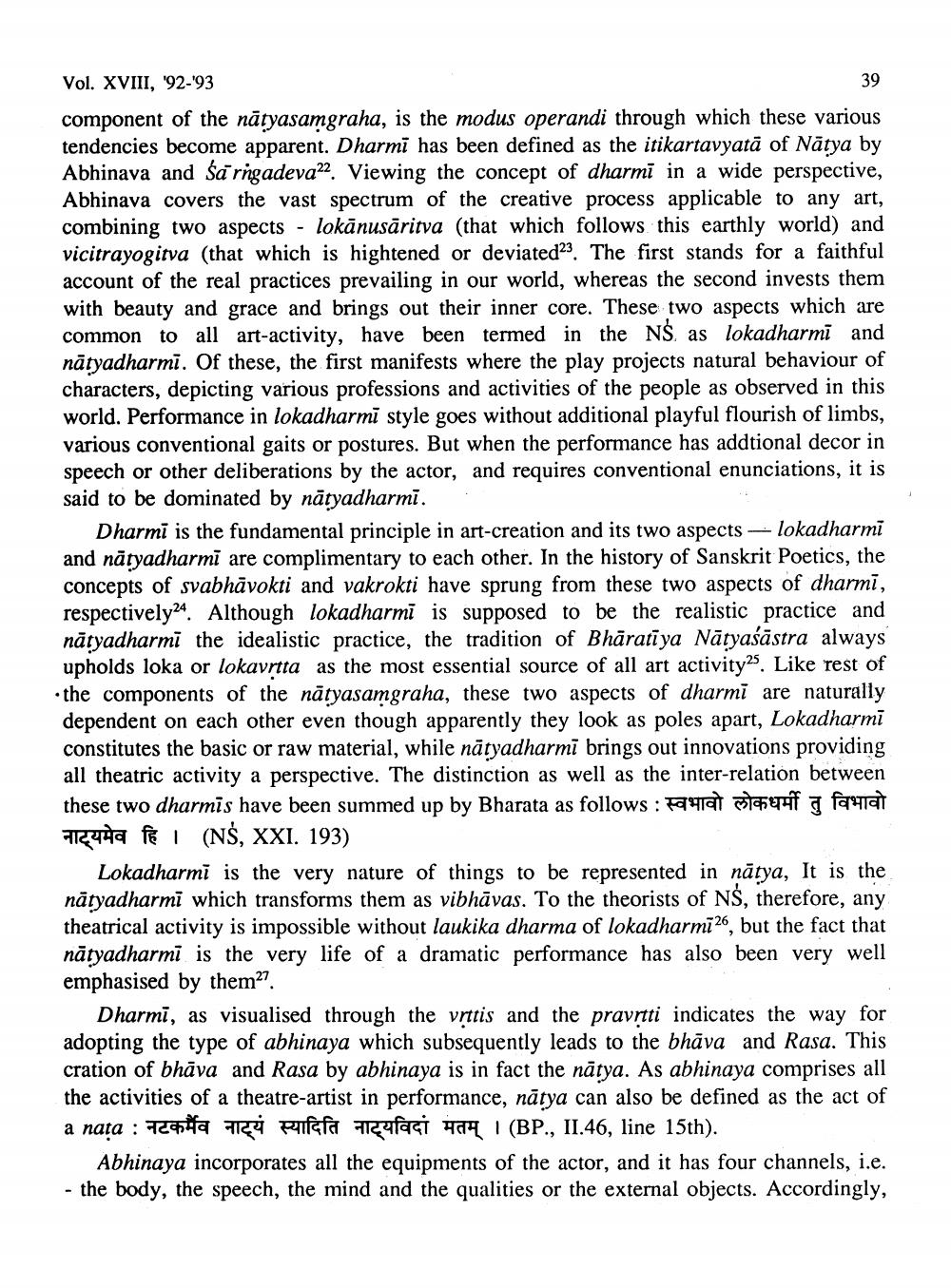________________
39
Vol. XVIII, '92-'93 component of the nātyasamgraha, is the modus operandi through which these various tendencies become apparent. Dharmi has been defined as the itikartavyatā of Nātya by Abhinava and Sarngadeva22 Viewing the concept of dharmī in a wide perspective, Abhinava covers the vast spectrum of the creative process applicable to any art, combining two aspects - lokānusāritva (that which follows this earthly world) and vicitrayogitva (that which is hightened or deviated23. The first stands for a faithful account of the real practices prevailing in our world, whereas the second invests them with beauty and grace and brings out their inner core. These two aspects which are common to all art-activity, have been termed in the NS as lokadharmi and nātyadharmi. Of these, the first manifests where the play projects natural behaviour of characters, depicting various professions and activities of the people as observed in this world. Performance in lokadharmi style goes without additional playful flourish of limbs, various conventional gaits or postures. But when the performance has addtional decor in speech or other deliberations by the actor, and requires conventional enunciations, it is said to be dominated by nātyadharmi.
Dharmi is the fundamental principle in art-creation and its two aspects - lokadharmi and nātyadharmi are complimentary to each other. In the history of Sanskrit Poetics, the concepts of svabhāvokti and vakrokti have sprung from these two aspects of dharmi, respectively24. Although lokadharmī is supposed to be the realistic practice and nātyadharmi the idealistic practice, the tradition of Bhāratīya Nātyaśāstra always upholds loka or lokavrtta as the most essential source of all art activity25. Like rest of the components of the nātyasamgraha, these two aspects of dharmi are naturally dependent on each other even though apparently they look as poles apart, Lokadharmī constitutes the basic or raw material, while nātyadharmi brings out innovations providing all theatric activity a perspective. The distinction as well as the inter-relation between these two dharmis have been summed up by Bharata as follows : 1979 et a falta Hruha Fe (NS, XXI. 193)
Lokadharmi is the very nature of things to be represented in nātya, It is the nätyadharmi which transforms them as vibhāvas. To the theorists of NS, therefore, any theatrical activity is impossible without laukika dharma of lokadharmi26, but the fact that nātyadharmi is the very life of a dramatic performance has also been very well emphasised by them??
Dharmi, as visualised through the yrttis and the pravrtti indicates the way for adopting the type of abhinaya which subsequently leads to the bhāva and Rasa. This cration of bhāva and Rasa by abhinaya is in fact the nātya. As abhinaya comprises all the activities of a theatre-artist in performance, nātya can also be defined as the act of a nata : 7294aari Piiffa prefaci 4A4 | (BP., II.46, line 15th).
Abhinaya incorporates all the equipments of the actor, and it has four channels, i.e. - the body, the speech, the mind and the qualities or the external objects. Accordingly,




